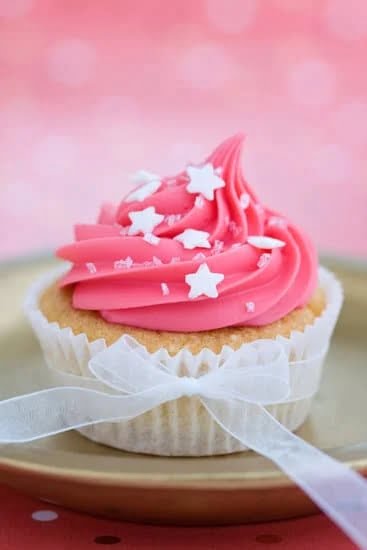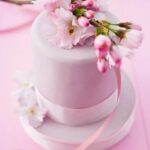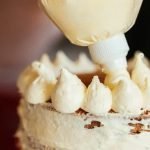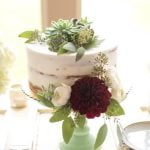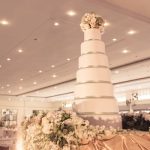Decorating cakes without frosting has become a popular trend in the world of baking. While frosting has long been the go-to choice for adding flair and sweetness to cakes, many bakers are now exploring alternative techniques that allow them to create visually stunning and delicious treats without the need for traditional buttercream or fondant.
The challenge of decorating cakes without frosting lies in finding ways to still make them look beautiful and appealing. Fondant, whipped cream, ganache, fresh fruits, flowers, and even painted designs are just a few of the creative options available. These techniques not only add unique visual elements to cakes but also offer different flavors and textures that can enhance the overall taste experience.
In this article, we will take an in-depth look at various cake decor techniques you can use without relying on frosting. From the trendy “naked cake” style that embraces rustic charm to the elegance of smooth ganache finishes and intricate fondant designs, we will explore each method step by step. Additionally, we will provide tips, tricks, and inspiring examples for creating visually appealing cakes with textural elements and unique toppers.
So whether you’re a professional baker looking to expand your repertoire or a home baker wanting to try something new, this article is for you. Get ready to unleash your creativity as we dive into the world of cake decor without frosting and discover exciting possibilities that will leave everyone craving more sweet delights.
The Art of Naked Cakes
A naked cake is a type of cake that is intentionally left unfrosted or partially frosted, allowing the layers to be visible. The concept of naked cakes originated from the desire to showcase the natural beauty and flavors of the cake itself, rather than covering it up with frosting. Naked cakes typically have a rustic and organic appearance, with their exposed layers creating a visually appealing contrast.
Why are naked cakes a trendy and elegant choice for celebrations?
Naked cakes have gained popularity in recent years due to their unique and elegant aesthetic. They are often chosen for weddings, birthdays, and other special occasions where a more refined and sophisticated look is desired. These cakes exude an effortless charm that goes hand-in-hand with rustic or bohemian themes. Their simplicity allows for creativity in other decorative elements such as fresh flowers, fruits, or even small figurines.
Techniques for enhancing the natural aesthetic of a naked cake
To enhance the natural beauty of a naked cake, there are several techniques you can employ. One option is to lightly frost the layers between each tier of the cake while leaving the sides exposed. This creates a subtle layer of frosting that helps hold the cake together without completely covering it up.
Another technique involves using simple syrup or flavored syrups to brush onto the cake layers before assembling them. This syrup not only adds moisture to the cake but also imparts additional flavor. For example, you could use raspberry syrup on vanilla cake layers.
Additionally, consider adding texture with different fillings or toppings like crumbled cookies, toasted nuts, or shredded coconut. These additions can provide contrasting textures and visual interest without relying on frosting.
Naked cakes allow for endless possibilities when it comes to decorations and embellishments. Whether you choose fresh flowers cascading down one side of the cake or edible gold leaf delicately placed on top, embracing the naked beauty of your creation will surely leave a lasting impression on your guests.
Smooth Ganache Finish
The art of cake decorating has evolved over the years, with bakers constantly finding new ways to create visually stunning creations. While frosting has long been a go-to choice for cake decor, there is a rising trend in exploring alternatives to frosting. One such luxurious alternative is the smooth ganache finish.
How to achieve a glossy and refined ganache finish on your cake
Achieving a smooth ganache finish requires precision and attention to detail. Begin by preparing your cake layers as you normally would, ensuring they are level and cooled completely. Then, make your ganache by heating equal parts heavy cream and chocolate together until melted and smooth. Allow the ganache to cool slightly before pouring it over the cake.
To achieve that glossy finish, it’s important to pour the ganache over the top of the cake and allow it to gently flow down the sides, using an offset spatula to help spread it evenly if needed. The key is to ensure that the entire surface of the cake is covered with a thin layer of ganache.
Different types of ganache and when to use them
There are several different types of ganache that can be used depending on your desired outcome or flavor profile. Classic dark chocolate ganache is rich and decadent, perfect for chocolate lovers. White chocolate ganache adds a touch of elegance and pairs well with fruits or floral flavors. You can even experiment with flavored ganaches by incorporating extracts or liqueurs for added depth of flavor.
Consider using different types of ganaches based on the occasion or theme of your cake. For example, dark chocolate ganache showcases sophistication for formal events while white chocolate pairs beautifully with pastel-colored designs for more whimsical celebrations.
Decorating ideas to complement a ganache-finished cake
Once you have achieved that luxurious smooth ganache finish, there are endless possibilities for decorating your cake. Consider accentuating the simplicity of the ganache by adding minimal embellishments, such as fresh berries or a dusting of powdered sugar. You can also use edible gold leaf or colored sprinkles to add a touch of shimmer and whimsy.
For more intricate designs, consider utilizing piping techniques with additional ganache or buttercream frosting in complementary colors. You can pipe decorative borders, flowers, or personalized messages onto the ganache surface for a truly custom creation. Additionally, you may choose to create texture by using stencils or embossing mats on the ganache.
Smooth ganache finishes offer a luxurious alternative to traditional frosting and allow for beautiful cake decor options. Whether you opt for a classic dark chocolate finish or experiment with different flavors and decorations, this technique is sure to impress both visually and gastronomically.
Whipped Cream Dreams
Whipped cream is a delicious and light alternative to frosting when it comes to cake decor. Whipped cream adds a fluffy and airy texture to cakes, creating a beautiful and sumptuous presentation. Decorating cakes with whipped cream opens up a world of possibilities for creative designs and flavors that can make any occasion special.
To achieve stable whipped cream for cake decoration, it is important to start with cold heavy whipping cream. Place the bowl and beaters in the refrigerator beforehand so they are chilled. Once you have whipped the cream to soft peaks, add in powdered sugar or vanilla extract for flavoring. Be careful not to overwhip the cream, as it can become too stiff.
When it comes to decorating with whipped cream, there are numerous options. One popular technique is to pipe rosettes or swirls onto the cake using a star-shaped tip. You can also spread a thin layer of whipped cream all over the cake for a more rustic look. Adding fresh fruit or edible flowers as garnishes can enhance the visual appeal of the cake.
| Cake Flavor | Filling | Topping |
|---|---|---|
| Strawberry Shortcake | Fresh strawberries and whipped cream | Additional fresh strawberries and mint leaves |
| Chocolate Mousse Cake | Smooth chocolate mousse | Shaved chocolate curls and raspberries |
| Mango Coconut Cake | Mango puree mixed with shredded coconut | Toasted coconut flakes and sliced mangoes |
Whipped cream allows for endless creativity and flexibility in cake decor. Its lightness and versatility make it a popular choice for those who prefer a less sweet alternative to frosting. So why not try incorporating whipped cream into your next cake decoration project and let your imagination run wild?
Fondant Fun
Fondant is a versatile and popular choice for cake decoration, allowing for endless creativity and intricate designs. This section will explore the many possibilities of using fondant to decorate cakes without frosting.
Fondant is a smooth, pliable icing that can be rolled out and draped over a cake or sculpted into various shapes and designs. It provides a clean and polished look to cakes, making it perfect for formal occasions or themed cakes. From covering an entire cake with fondant to creating detailed decorations such as flowers, figurines, or patterns, there are countless ways to use fondant in your cake decor.
To cover a cake with fondant, start by applying a thin layer of buttercream or ganache on the cake to create a smooth surface. Dust your working surface with powdered sugar or cornstarch to prevent sticking, then roll out the fondant using a rolling pin. Carefully lift the rolled fondant over the cake and gently smooth it onto the surface, working from top to bottom and gradually removing any air bubbles or wrinkles.
Once the cake is covered in fondant, it’s time to get creative. Fondant can be easily molded into shapes using cookie cutters, silicone molds, or simply by hand. For more intricate designs, invest in some fondant tools such as embossers, texture mats, or modeling tools. These tools will help you create details like ruffles, lace patterns, or realistic textures on your fondant decorations.
| Fondant Techniques | Tools Needed |
|---|---|
| Covering a Cake with Fondant | Rolling pin |
| Fondant Flowers | Flower cutters, shaping foam |
| Fondant Patterns and Textures | Embossers, texture mats, modeling tools |
In addition to traditional fondant decorations, you can also experiment with painting on fondant. This involves using edible food paints or gel colors mixed with alcohol or lemon extract to create intricate designs or watercolor-like effects on the fondant surface. With a steady hand and some creativity, you can transform your cake into a work of art.
Remember to plan ahead when working with fondant as it needs time to set and dry. Avoid refrigerating fondant-covered cakes as this can cause condensation and make the surface sticky.
When it comes to cake decor without frosting, fondant opens up a world of possibilities. From elegant wedding cakes adorned with delicate flowers to whimsical birthday cakes featuring sculpted figures, there is no limit to what you can achieve with fondant. So go ahead and let your imagination run wild as you explore the fun and creative side of decorating cakes with fondant.
Naked with Natural
Fresh fruit and floral cake decor is a beautiful and natural alternative to frosting. This style embraces the simplicity of naked cakes while also adding a touch of color and freshness through the use of seasonal fruits and edible flowers. By incorporating these elements, you can create stunning designs that are both visually appealing and delicious.
To start decorating with fresh fruit and flowers, it is important to choose ingredients that are in season. This ensures that your cake will not only look great but also taste delicious. Strawberries, blueberries, raspberries, and sliced citrus fruits are popular choices for adding a pop of color and flavor to your cake. Edible flowers like roses, lavender, pansies, or violets can be used to create an elegant and whimsical look.
When arranging fresh fruit and flowers on a cake, there are a few techniques to keep in mind. Start by placing larger pieces of fruit or clusters of berries on the cake first to anchor the design. Then fill in any empty spaces with smaller fruits or individual petals from the edible flowers. Play around with different arrangements until you find one that is aesthetically pleasing to you.
Designs and themes that work well with this style include rustic weddings, garden parties, or summertime celebrations. The natural beauty of the fresh fruit and flowers complements these themes perfectly. Consider incorporating other natural elements like twigs or leaves for an added touch of whimsy.
Fresh fruit and floral cake decor not only adds visual appeal but also provides a refreshing burst of flavor in each bite. It is important to note that these decorations should be added shortly before serving the cake as the fruit can release juices which may affect the stability of the frosting-free base.
Elegance in Brushstrokes
Painting on cakes is a delightful and artistic way to decorate without using frosting. This technique allows for endless creativity and can result in stunning and unique designs. Whether you’re a professional baker or a home chef, painting on cakes offers a chance to showcase your talent and create edible works of art.
To begin painting on cakes, there are several techniques you can use. One popular method is using food-safe edible paints, which are specifically formulated for use on cakes and other edible creations. These paints come in a wide range of colors and consistencies, allowing for precise details or broad strokes.
Another option is using gel food coloring mixed with clear alcohol or lemon extract to create your own custom paint. This method provides vibrant colors that dry quickly. Whichever method you choose, be sure to use brushes specifically designated for cake decorating to ensure cleanliness and food safety.
When it comes to inspiration, there are countless cake designs that showcase the beauty of painted decor without frosting. From watercolor-like brushstrokes to intricate patterns and designs, the possibilities are truly endless. Floral motifs are particularly popular, as they lend themselves well to delicate brushwork and bring a touch of elegance to any cake. Other designs may include landscapes, abstract art, or even portraits – all executed with edible paints.
If you’re new to painting on cakes, it’s recommended to start with simpler designs and gradually build up your skills. Practice different brush techniques like stippling, blending colors together, or creating fine lines for intricate details. By experimenting with different styles and techniques, you’ll become more comfortable with the process and develop your unique artistic voice.
Textural Delights
When it comes to cake decorating, frosting is often seen as the go-to option. However, there are many creative and visually appealing techniques that can be used to decorate cakes without relying on frosting. In this section, we will explore some of these textural delights that can add both texture and visual interest to your cakes.
One popular alternative to frosting is creating textured effects such as drips, dots, and patterns. These techniques not only enhance the look of your cake but also provide a unique tactile experience for your guests. To create textured effects like drips, you can use ganache or melted chocolate and allow it to drizzle down the sides of the cake. This creates a beautiful and decadent look that is perfect for special occasions.
Another textural delight option is using various tools and materials to create patterns on your cake. For example, you could use a stencil with powdered sugar or cocoa powder to create intricate designs on the surface of the cake. Dots can also be created using piping bags with different tips or even by placing small candies or sprinkles in a pattern on top of the cake.
In addition to drips and patterns, you can also experiment with different textures using edible decorations such as wafer paper or textured fondant. Wafer paper can be shaped into ruffles or flowers and placed strategically on the cake for a three-dimensional effect. Textured fondant can be rolled out and applied in layers to create a unique texture that adds depth and interest.
By exploring these creative textural delights, you can elevate your cake decor without relying solely on frosting. Whether it’s adding drips, creating patterns, or experimenting with unique textures, these techniques will give your cakes a visually stunning and one-of-a-kind look. So why not let your creativity shine through these alternative methods?
Top It Off
When it comes to cake decor without frosting, the options are truly endless. Not only can you create beautiful and unique designs using techniques like naked cake, smooth ganache finish, whipped cream, fondant, fresh fruit and floral decor, painting on cakes, and textural effects, but you can also take your cake to the next level with creative and unconventional toppers.
Whether you’re celebrating a birthday, wedding, or any special occasion, these unique toppers will add that extra touch of personality and style to your frosting-free masterpiece.
- Natural Elements: Embrace the organic beauty of nature by using natural elements as cake toppers. Consider incorporating small potted plants or succulents for a rustic theme or delicately placed twigs and leaves for an enchanted garden look. Edible flowers can also double as beautiful decorations and toppings for your cake.
- Personalized Picks: Add a personal touch to your frosting-free cake by creating customized toppers that reflect the occasion or the person being celebrated. Craft personalized name flags out of cardstock or wooden skewers to mark individual slices at a birthday party. For weddings or anniversaries, consider making custom silhouette cake toppers featuring the couple’s initials or photos.
- Alternative Figurines: Move away from traditional plastic figurines and opt for unique alternatives as cake toppers. Miniature ceramic animals can be painted in vibrant colors and used as whimsical decorations on top of your cake. Alternatively, consider using action figures from a favorite movie or TV show as a quirky and fun addition.
- Artistic Expressions: Let your creativity shine by incorporating miniature pieces of art onto your frosting-free cake. Painted wooden cutouts or clay sculptures can be attached to skewers and inserted into the top layer of the cake for a visually striking centerpiece.
Remember that the choice of a topper should complement your overall cake decor style. Consider the theme, colors, and aesthetic of your cake when selecting a unique topper that will truly stand out. With these unconventional toppers, you can take your frosting-free cake decor to new heights and create a show-stopping centerpiece for your next celebration.
Conclusion
In conclusion, frosting-free cake decor offers a plethora of creative possibilities for those who are looking to break away from traditional frosting techniques. Throughout this article, we have explored various alternatives to frosting including naked cakes, smooth ganache finishes, whipped cream creations, fondant designs, fresh fruit and floral arrangements, painted decor, textural effects, and unique cake toppers.
Each of these techniques provides an opportunity to showcase your creativity and create a stunning cake that is not only delicious but visually appealing as well.
By embracing cake decor without frosting, you can deliver a unique and modern twist on classic desserts. Naked cakes offer a rustic and elegant touch that highlights the beauty of the cake layers themselves. Smooth ganache finishes add a luxurious touch with their glossy and refined appearance. Whipped cream decorations provide a light and fluffy texture that complements any occasion. Fondant allows for intricate designs and gives cakes a polished look.
Fresh fruit and floral arrangements bring natural beauty to your dessert table. Painting directly on cakes allows for artistic expression and customization. Textural effects create visual interest and add dimension to your creations. And finally, unique cake toppers offer a personalized touch that reflects your own style.
So why limit yourself to traditional frosting when there are so many other options available? Let your creativity shine by exploring these diverse techniques for frosting-free cake decor.
Experiment with different combinations of textures, flavors, colors, and designs to truly make your cakes stand out at any celebration or event. With the knowledge gained from this article, you have the tools needed to create stunning works of art that not only taste amazing but also leave a lasting impression on everyone who sees them.
In essence, embracing cake decor without frosting opens up a world of possibilities where creativity knows no bounds. Whether you choose to go naked with exposed layers or opt for smooth ganache finishes or explore the versatility of fondant or experiment with fresh fruits and flowers or try your hand at painting on cakes or create visually intriguing textural effects or top your cake with unique personalized toppers, the choice is yours.
So go ahead, break free from traditional frosting techniques and let your imagination run wild. Your cakes will not only be delicious but also works of edible art that will delight and amaze anyone lucky enough to partake in them.
Frequently Asked Questions
How do you decorate a plain cake?
Decorating a plain cake can be done in several ways to add visual appeal and make it more enticing. One simple technique is to dust the top of the cake with powdered sugar or cocoa powder for a classic, elegant look. Another option is to use fresh fruits, such as sliced strawberries or blueberries, to create a colorful and natural decoration on top of the cake.
Additionally, you can use whipped cream or buttercream frosting to pipe decorative patterns or borders onto the cake using a piping bag and different tips. For those who are artistically inclined, decorating the cake with intricate designs using fondant or marzipan can be a creative way to transform a plain cake into a visually stunning centerpiece.
How to decorate butter cake without icing?
Decorating a butter cake without icing provides an opportunity to explore alternative techniques that rely on complementary flavors and textures rather than relying on traditional frosting. One option is to drizzle a glaze over the cooled cake, which can be made with ingredients like lemon juice, powdered sugar, and even flavored syrups for added taste. This glaze will add moisture and sweetness while forming an attractive drizzle pattern on top of the cake.
Another idea is to dust the entire surface of the butter cake with cinnamon-sugar or chopped nuts for added flavor and texture. Lastly, consider serving slices of butter cake alongside fresh whipped cream, fruit compote, or even chocolate ganache as accompaniments that not only enhance the taste but also provide an appealing presentation.
What are the 5 kinds of cake decorating?
There are numerous types of cake decorating techniques that allow bakers to showcase their creativity and skills:

Welcome to our cake decorating blog! My name is Destiny Flores, and I am the proud owner of a cake decorating business named Cake Karma. Our mission is to provide delicious, beautiful cakes for all occasions. We specialize in creating custom cakes that are tailored specifically to each customer’s individual needs and tastes.

